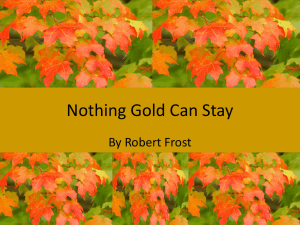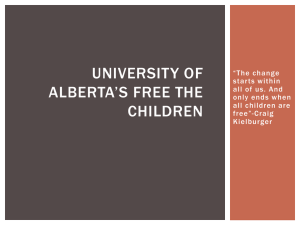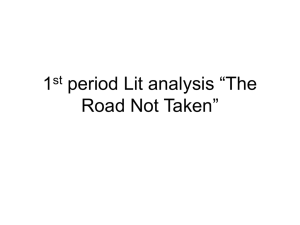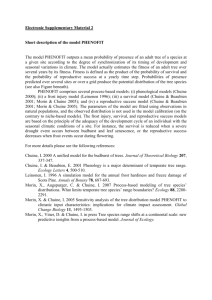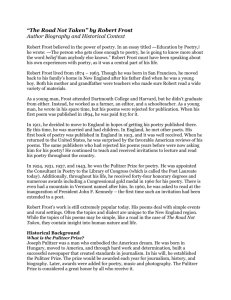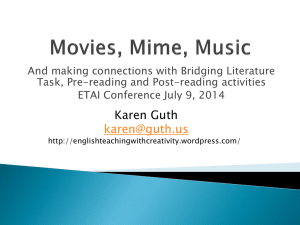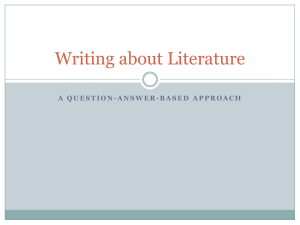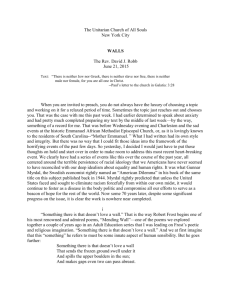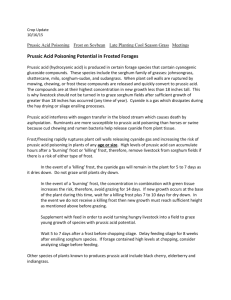Robert Frost
advertisement
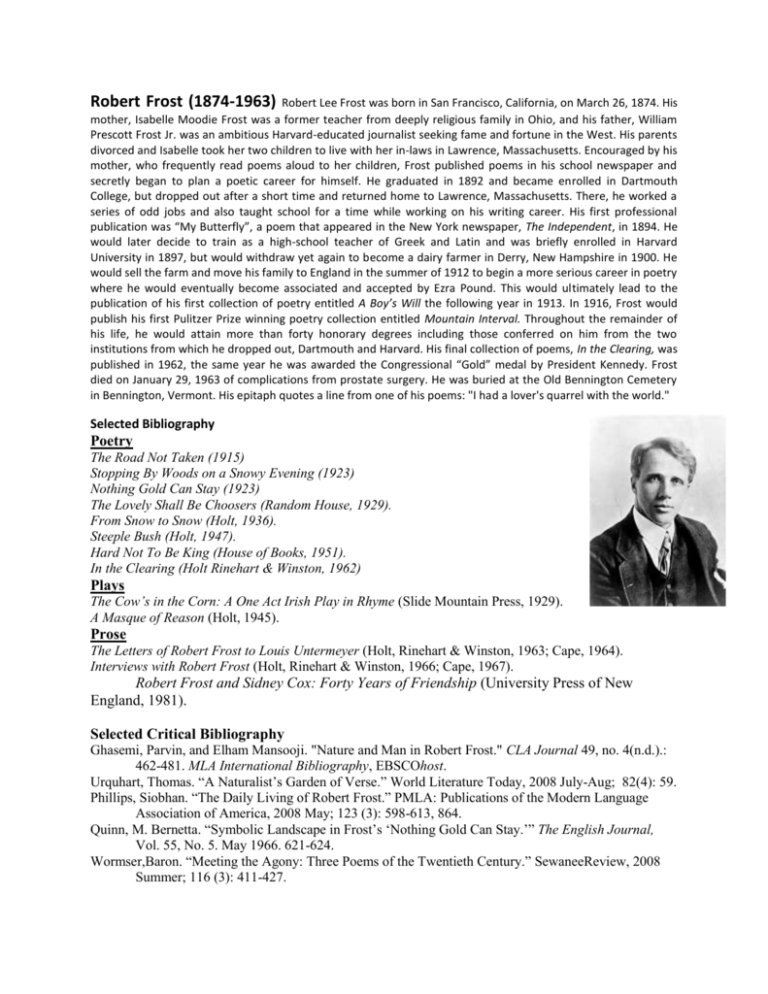
Robert Frost (1874-1963) Robert Lee Frost was born in San Francisco, California, on March 26, 1874. His mother, Isabelle Moodie Frost was a former teacher from deeply religious family in Ohio, and his father, William Prescott Frost Jr. was an ambitious Harvard-educated journalist seeking fame and fortune in the West. His parents divorced and Isabelle took her two children to live with her in-laws in Lawrence, Massachusetts. Encouraged by his mother, who frequently read poems aloud to her children, Frost published poems in his school newspaper and secretly began to plan a poetic career for himself. He graduated in 1892 and became enrolled in Dartmouth College, but dropped out after a short time and returned home to Lawrence, Massachusetts. There, he worked a series of odd jobs and also taught school for a time while working on his writing career. His first professional publication was “My Butterfly”, a poem that appeared in the New York newspaper, The Independent, in 1894. He would later decide to train as a high-school teacher of Greek and Latin and was briefly enrolled in Harvard University in 1897, but would withdraw yet again to become a dairy farmer in Derry, New Hampshire in 1900. He would sell the farm and move his family to England in the summer of 1912 to begin a more serious career in poetry where he would eventually become associated and accepted by Ezra Pound. This would ultimately lead to the publication of his first collection of poetry entitled A Boy’s Will the following year in 1913. In 1916, Frost would publish his first Pulitzer Prize winning poetry collection entitled Mountain Interval. Throughout the remainder of his life, he would attain more than forty honorary degrees including those conferred on him from the two institutions from which he dropped out, Dartmouth and Harvard. His final collection of poems, In the Clearing, was published in 1962, the same year he was awarded the Congressional “Gold” medal by President Kennedy. Frost died on January 29, 1963 of complications from prostate surgery. He was buried at the Old Bennington Cemetery in Bennington, Vermont. His epitaph quotes a line from one of his poems: "I had a lover's quarrel with the world." Selected Bibliography Poetry The Road Not Taken (1915) Stopping By Woods on a Snowy Evening (1923) Nothing Gold Can Stay (1923) The Lovely Shall Be Choosers (Random House, 1929). From Snow to Snow (Holt, 1936). Steeple Bush (Holt, 1947). Hard Not To Be King (House of Books, 1951). In the Clearing (Holt Rinehart & Winston, 1962) Plays The Cow’s in the Corn: A One Act Irish Play in Rhyme (Slide Mountain Press, 1929). A Masque of Reason (Holt, 1945). Prose The Letters of Robert Frost to Louis Untermeyer (Holt, Rinehart & Winston, 1963; Cape, 1964). Interviews with Robert Frost (Holt, Rinehart & Winston, 1966; Cape, 1967). Robert Frost and Sidney Cox: Forty Years of Friendship (University Press of New England, 1981). Selected Critical Bibliography Ghasemi, Parvin, and Elham Mansooji. "Nature and Man in Robert Frost." CLA Journal 49, no. 4(n.d.).: 462-481. MLA International Bibliography, EBSCOhost. Urquhart, Thomas. “A Naturalist’s Garden of Verse.” World Literature Today, 2008 July-Aug; 82(4): 59. Phillips, Siobhan. “The Daily Living of Robert Frost.” PMLA: Publications of the Modern Language Association of America, 2008 May; 123 (3): 598-613, 864. Quinn, M. Bernetta. “Symbolic Landscape in Frost’s ‘Nothing Gold Can Stay.’” The English Journal, Vol. 55, No. 5. May 1966. 621-624. Wormser,Baron. “Meeting the Agony: Three Poems of the Twentieth Century.” SewaneeReview, 2008 Summer; 116 (3): 411-427. A Symbolic Look at the Landscape (The English Journal, Vol. 55, No. 5, May 1966, pp. 621-624) Sister Quinn’s article describes Robert Frost’s use of picturesque settings and symbolism. In her article “Symbolic Landscape in Frost’s ‘Nothing Gold Can Stay’” Sister Quinn calls Frost a “landscape artist” and explains that his works include “several layers of imagery” much like that of a descriptive landscape painting (623). Frost pays tribute to man through his absence and focuses on the “importance of the human consciousness within a landscape” (623). During the first read, Robert Frost’s poem may seem to be about transience and nothing more; however, Quinn states that his poem is “not one of sadness, but of triumph” over this passage of time (622). Even though it is fading, Gold is still the greatest state to hope for and was amply worth the effort and pain to achieve it. Gold is the age of legends and all things termed ‘golden’ are known for how fantastic they are. To understand how Frost’s symbolism differs, it is crucial to understand how the small number of symbols in the poem functions as a whole. Quinn agrees with Henry James, a key figure in 19th century literary realism, when he stated that “all literature has no reason for being other than to represent life” which Frost does exceedingly well (622). It is Frost’s separation of the contradictory symbols and focus on humanity which sets him apart from Nature poets and his exterior rather than created landscapes which set him apart from fiction writers. After reading and analyzing the poem as a picture of the landscape, Quinn says that the reader will forever have a sample of the “country north of Boston” in their mind. She comments that Frost’s theology could be interpreted as a variation of the old proverb: “God gives, and God takes away” (624). When gold is lost green appears, which is the symbol of spring and new life. The plant’s flower turns to leaf which brings in nourishment and sustainable life. Breathtaking dawn becomes day with all its new beginnings and chances. It is true that ‘Nothing Gold Can Stay’ yet if it did stay it would no longer be considered precious.
